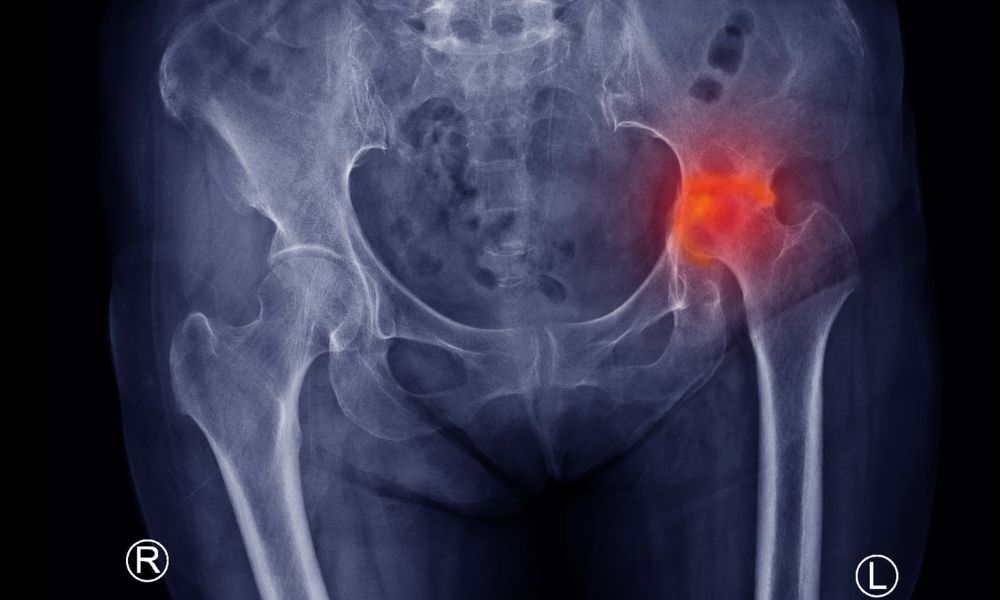Avascular Necrosis Treatment in Nagpur with expert care and advanced solutions

Avascular Necrosis Treatment
Avascular necrosis refers to the death of bone tissue resulting from insufficient blood supply. Also known as osteonecrosis, this condition can result in small fractures within the bone, ultimately leading to its collapse. The progression of this process typically spans several months to years. Injuries such as fractures or dislocated joints can impede blood circulation to specific areas of bone. Additionally, avascular necrosis is linked to prolonged use of high-dose steroid medications and excessive alcohol consumption. While anyone can develop this condition, it is most frequently observed in individuals aged 30 to 50.
What causes Avascular Necrosis?
Bone fractures or conditions that impede blood circulation to bone tissue may lead to avascular necrosis. Approximately 20% of avascular necrosis instances occur without a discernible cause. Recognized factors contributing to avascular necrosis include:
- Avascular necrosis can be classified into two types: traumatic and nontraumatic. Traumatic avascular necrosis may occur following a fracture or dislocation of a joint.
- Non-traumatic avascular necrosis arises from an illness or medical condition that impedes blood circulation to the bone tissue. This form of avascular necrosis frequently impacts the same bones bilaterally. For instance, if avascular necrosis is present in the right shoulder, it is probable that the left shoulder will also be affected.
Diagnosis
A health care provider will assess your joints during a physical examination by applying pressure to check for any tenderness. Additionally, they may manipulate the joints into various positions to evaluate whether there is a reduction in the range of motion.
Imaging tests
Numerous factors can lead to joint discomfort. Imaging examinations can assist in identifying the origin of the pain. These tests may encompass:
- X-rays are capable of detecting alterations in bone structure that manifest during the advanced phases of avascular necrosis. However, in the initial stages of this condition, X-rays typically do not reveal any abnormalities.
- Magnetic Resonance Imaging (MRI) and Computed Tomography (CT) scans provide high-resolution images that can identify early signs of bone changes potentially associated with avascular necrosis.
- A bone scan involves the injection of a small quantity of radioactive material into a vein. This tracer migrates to areas of the bones that are either damaged or in the process of healing, appearing as bright spots on the imaging plate.
Medications
In the early stages of avascular necrosis, certain medications may help ease symptoms:
- Nonsteroidal anti-inflammatory drugs (NSAIDs) are commonly used medications, including over-the-counter options such as ibuprofen (Advil, Motrin IB, among others) and naproxen sodium (Aleve), which may alleviate pain related to avascular necrosis. More potent NSAIDs are accessible through prescription.
- Medications for osteoporosis may potentially slow the advancement of avascular necrosis, although the supporting evidence remains inconclusive.
- Cholesterol-lowering medications can help decrease cholesterol and fat levels in the bloodstream, potentially preventing the vascular blockages that contribute to avascular necrosis.
- Drugs that promote vasodilation, such as iloprost (Ventavis), may enhance blood circulation to the affected bone, although further research is necessary to confirm this effect.
- For individuals with clotting disorders, anticoagulants like warfarin (Jantoven) may help avert the formation of clots in the blood vessels supplying the bones.
Therapy
Your health care provider might recommend:
- Rest. Limiting physical activity or utilizing crutches for an extended period may assist in reducing stress on the joint, potentially mitigating further bone deterioration.
- Exercises. A physical therapist can instruct on specific exercises designed to preserve or enhance the joint’s range of motion.
- Electrical stimulation. The application of electrical currents may promote the regeneration of new bone tissue to substitute for the damaged bone. This method can be employed during surgical procedures or applied directly to the affected area, as well as through electrodes placed on the skin.
Surgical and other procedures
Because most people don’t develop symptoms until avascular necrosis is advanced, your health care provider might recommend surgery. The options include:
- Core decompression involves the surgical removal of a portion of the inner bone layer. This procedure not only alleviates pain but also creates additional space within the bone, which stimulates the formation of healthy bone tissue and the development of new blood vessels.
- Bone grafting is a technique utilized to reinforce the area of bone impacted by avascular necrosis. This process involves transplanting a segment of healthy bone from another region of the patient’s body.
- Osteotomy, or bone reshaping, entails the excision of a wedge of bone situated above or below a weight-bearing joint. This intervention aims to redistribute weight away from the compromised bone, potentially delaying the need for joint replacement.
- In cases where the affected bone has collapsed or other treatments have proven ineffective, joint replacement surgery may be necessary. This procedure involves substituting the damaged components of the joint with artificial materials, such as plastic or metal.
- Regenerative medicine offers a novel approach through bone marrow aspirate and concentration, which may benefit individuals with early-stage avascular necrosis of the hip. During this procedure, the surgeon extracts a sample of necrotic hip bone and replaces it with stem cells derived from the patient’s bone marrow, potentially facilitating new bone growth. Further research is required to validate this treatment.